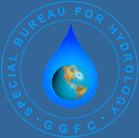
|

|

|

|

|

|

|

|
|
Contact: chen-at-csr.utexas.edu Web Curator: Jianli Chen Last updated: December 11, 2015 |


The IERS SBH website has moved to https://www.polyu.edu.hk/lsgi/ggfc/
|
Introduction: |
|
The Global Geophysical Fluids Center (GGFC) was established by the
International Earth Rotation Service, now the International Earth Rotation and Reference Systems Service
(IERS) on IERS's 10th
anniversary day January 1, 1998, in an effort to expand IERS's services to the scientific community. Under GGFC, eight
Special Bureaus (SB) were selected, each to be responsible for research activities relating to a specific Earth component
or aspect of the geophysical fluids of the Earth system. The Special Bureau for Hydrology
(SBH) is responsible to coordinate research
activities related to continental water.
The main goals are: To collect and distribute data sets and numerical model results related to the changing distribution of water over the planet, especially over land, that are of interest to the geodetic community. Geodetically interesting applications include estimating changes in the gravity field, geocenter, earth rotation, and load deformation of geodetic sites. These variations are of direct interest to the International Earth Rotation Service and the community which it serves in the interpretation of earth rotation changes, improved definition of the terrestrial reference frame, and improvements in the quality of geodetic observations. To focus on data sets and model results which provide generally complete global measures of water mass redistribution. Regional or continental scale data sets may be of some interest, but the main focus will be global. To provide global hydrological data in forms that will allow useful comparisons with geodetic variations, such as earth rotation and gravity field changes. To provide global hydrological data in forms that will allow useful connections with model and data results from other GGF subcenters, especially atmosphere and ocean subcenters. To develop working relationships with hydrological modeling groups, in order to compute geodetically interesting quantities directly during model computations. This will simplify and speed the use of improved hydrologic models, and may provide geodetic measures for evaluation such models. |